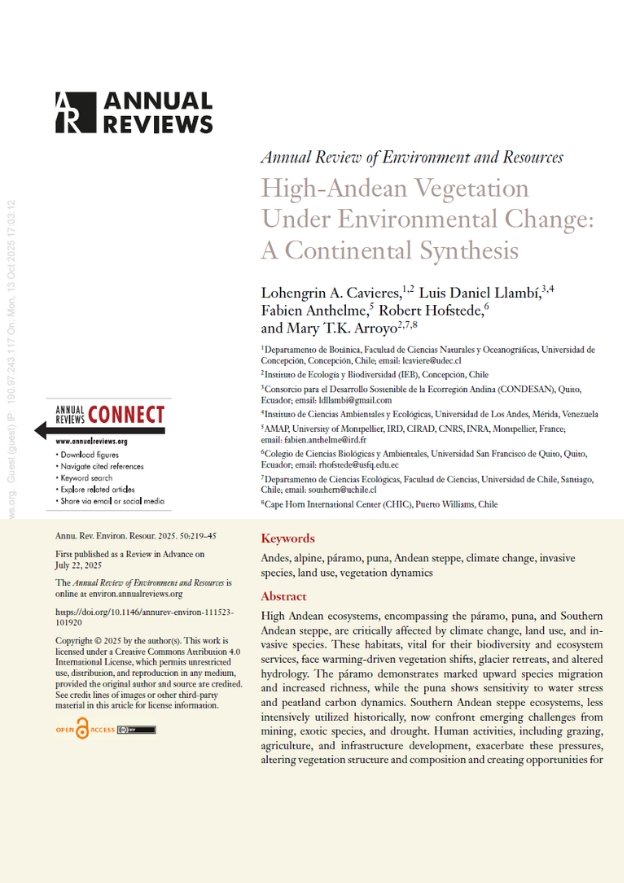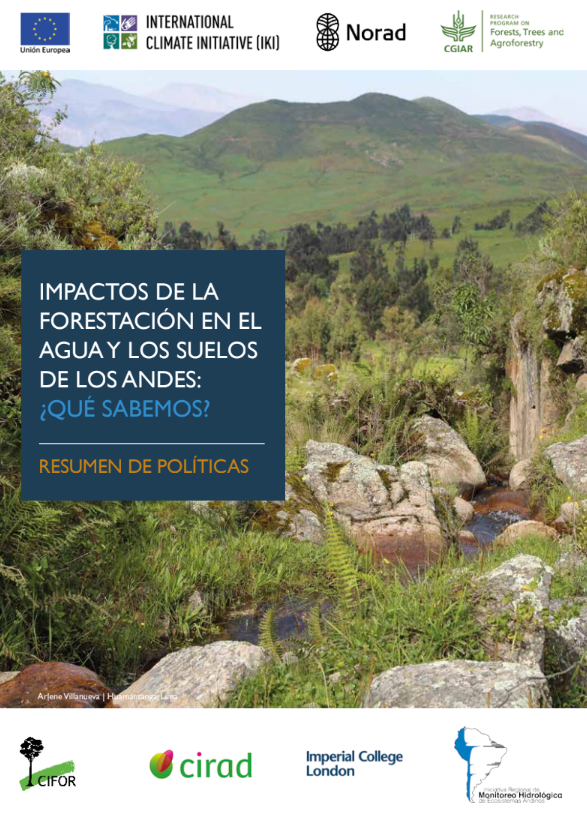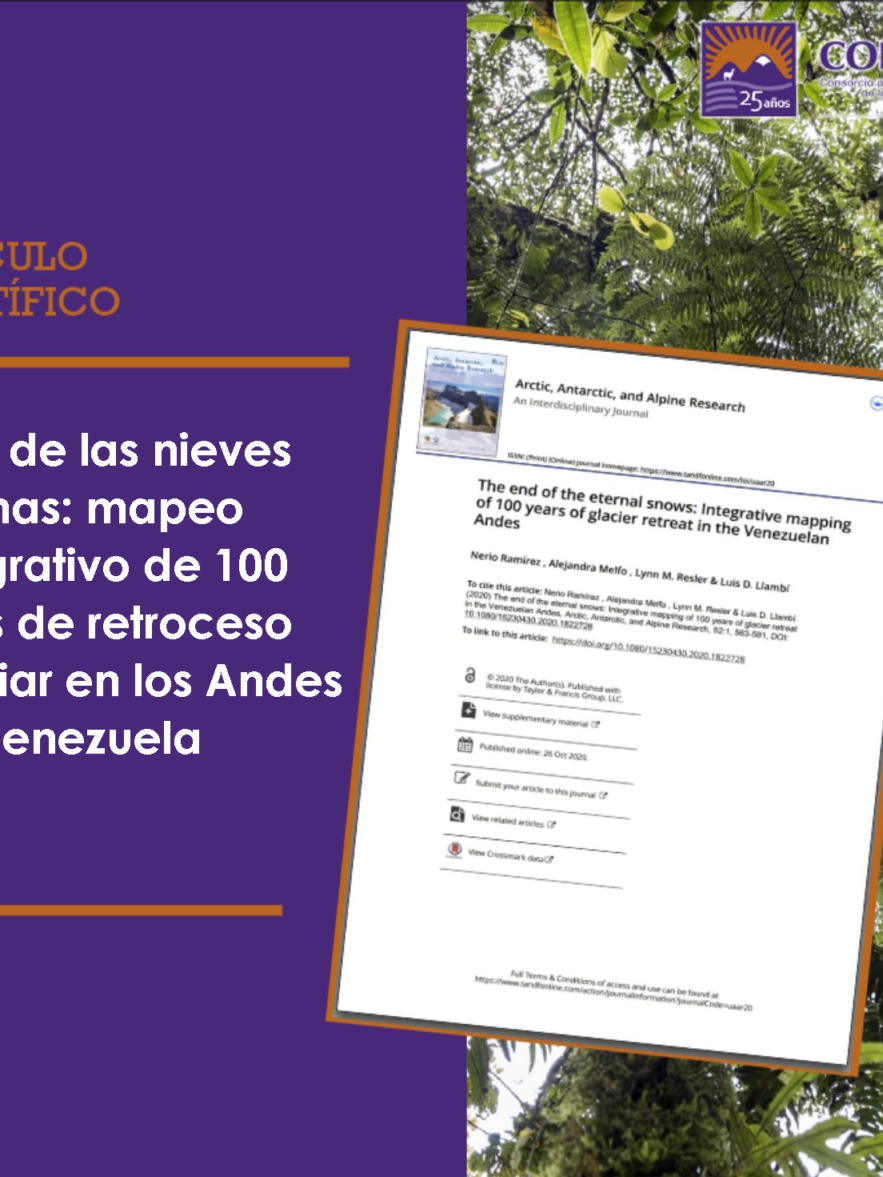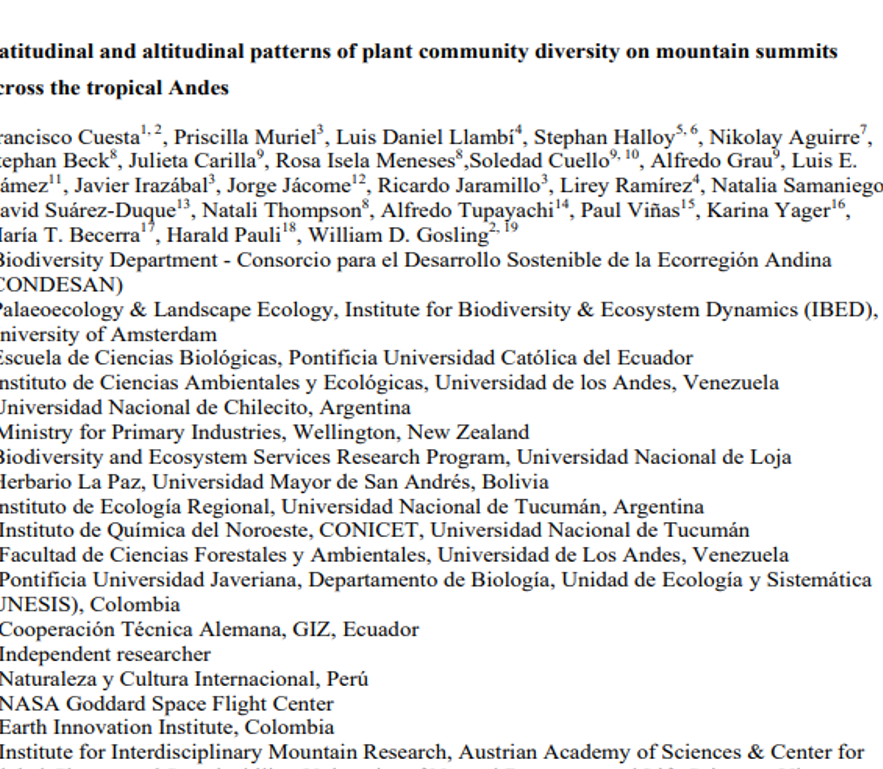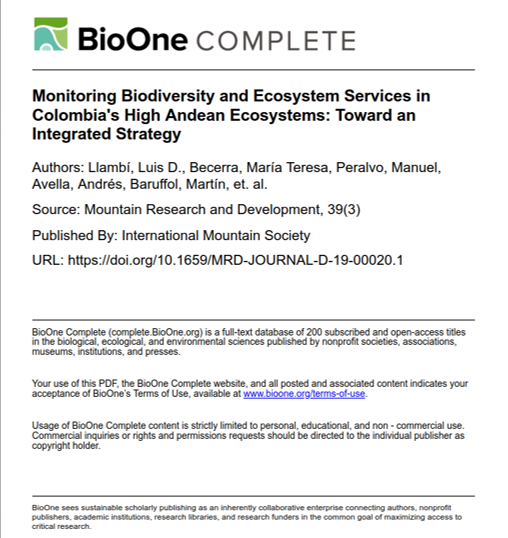High Andean ecosystems, encompassing the páramo, puna, and Southern Andean steppe, are critically affected by climate change, land use, and invasive species. These habitats, vital for their biodiversity and ecosystem services, face warming-driven vegetation shifts, glacier retreats, and altered hydrology. The páramo demonstrates marked upward species migration and increased richness, while the puna shows sensitivity to water stress and peatland carbon dynamics. Southern Andean steppe ecosystems, less intensively utilized historically, now confront emerging challenges from mining, exotic species, and drought. Human activities, including grazing, agriculture, and infrastructure development, exacerbate these pressures, altering vegetation structure and composition and creating opportunities for exotic species to proliferate. Despite shared climatic challenges, regional responses vary due to differences in precipitation, vegetation biogeography, and land-use history. This synthesis emphasizes the need for targeted, region-specific conservation strategies, coordinated comparative research, and expanded monitoring networks to address knowledge gaps, understand driver interactions, and ensure the resilience of these fragile ecosystems under global change pressures.
Artículo Científico, CONDESAN, Programa Adaptación en las Alturas
High-Andean Vegetation Under Environmental Change: A Continental Synthesis
Cita: Cavieres et al. (2025). High-Andean Vegetation Under Environmental Change: A Continental Synthesis. Annu. Rev. Environ. Resour. 2025. 50:219–45
Autores: Lohengrin A. Cavieres, Luis Daniel Llambí, Fabien Anthelme, Robert Hofstede, Mary T.K. Arroyo
Instituciones: Universidad de Concepción, Instituto de Ecología y Biodiversidad (IEB), CONDESAN, Universidad de Los Andes, University of Montpellier, Universidad San Francisco de Quito, Universidad de Chile
Países: Chile, Ecuador, Francia, Venezuela
High-Andean Vegetation Under Environmental Change: A Continental Synthesis

